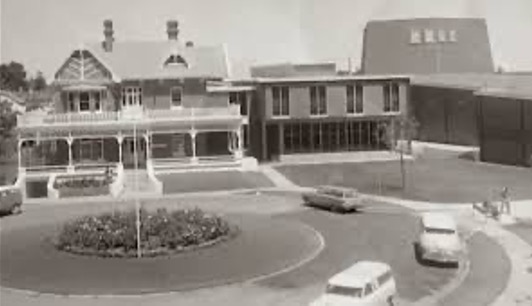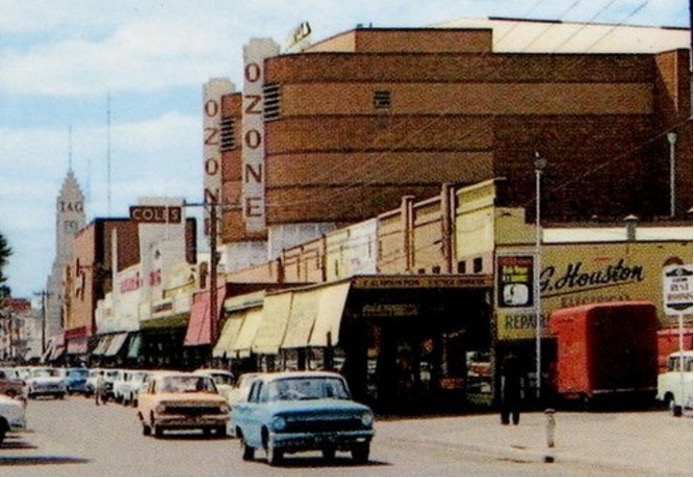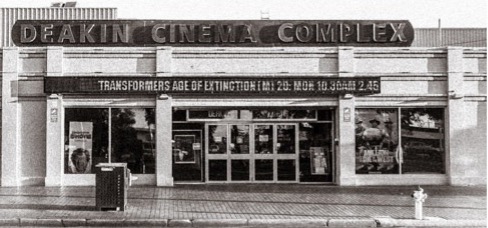Our History
Founded in the early 1950s, the Mildura Film Society (MFS) was established with a clear purpose: to bring high-quality foreign language and independent films to the Mildura region.
At a time when commercial cinemas primarily focused on mainstream films with broad audience appeal, MFS offered an alternative—films that were thought-provoking, culturally diverse, and artistically significant.
Run entirely by volunteers, the Society has always operated with minimal overheads. This community-driven model has allowed MFS to curate a unique and enriching film program, free from the commercial pressures faced by traditional cinemas.
More than seventy years on, MFS continues to thrive, proudly contributing to Mildura’s cultural landscape.
Expanding Horizons Through Film
The MFS has long been dedicated to offering films that provide a window into diverse cultures and unique cinematic traditions. Over the years, the Society has screened works by some of the world’s most influential filmmakers, including Akira Kurosawa from Japan, Ingmar Bergman from Sweden, and Jacques Tati from France.
These films not only showcased exceptional storytelling but also offered audiences a deeper understanding of the cultures from which they originated.
In its early days, MFS sourced films through a variety of channels, including film libraries, the State Film Centre, the National Film Library, and foreign embassies eager to promote the cinematic culture of their respective countries.
This commitment to cultural exchange has remained a cornerstone of the Society’s programming, continuing to enrich the local community with a diverse selection of global cinema.
Evolving Venues
The Mildura Film Society’s screening venues have evolved over the years as the community and the Society itself grew. Initially, films were shown in the Bolte Gallery at Rio Vista House, offering an intimate setting for local cinephiles.
In late 1966, screenings moved to the Mildura Arts Centre (MAC) theatre, providing a larger space to accommodate the growing interest in international cinema.

The closure of the Ozone Theatre in 1971 marked a turning point, and MFS saw a surge in membership, bringing in new members eager to explore a wider range of films. However, by 1984, membership numbers had declined, and the MAC became less affordable.
As a result, the Society adapted by relocating screenings to the Mildura High School library and drama room, ensuring that the tradition of showcasing unique films continued, despite the challenges.
Fluctuating Membership and Changing Times
Over the years, membership in the Mildura Film Society has fluctuated in response to various cultural and technological shifts. The arrival of television in 1966, followed by the closure of the Ozone Theatre in 1971, marked a significant period of transition for local entertainment. In 1975, the introduction of colour TV and the opening of Cinema Deakin further influenced how people chose to spend their leisure time.
During the late 1960s and early 1970s, the Society’s main focus was to provide a viable and enjoyable alternative to the limited options available—particularly the cold drive-in experience during winter and black-and-white television, which offered only two channels and shut down by 10:00 p.m. With the closure of local cinemas, MFS film offerings became the only movies on the big screen.
Contrary to current offerings, the emphasis then was on accessible, mainstream entertainment. Films screened during this period were not primarily foreign language or arthouse titles. Instead, the Society focused on popular commercial films such as Tom Jones, Cabaret, and Alfie, aiming to entertain a broad audience. This approach proved highly successful, and during the 1970s, MFS membership grew to over 400.

Film Festivals and Partnerships
In 1988, the Federation of Victorian Film Societies (FVFS), of which MFS was and is a proud member, began sponsoring film festivals in larger country towns across Victoria.
In Mildura, the FVFS helped facilitate the MFS’s own film festival by renting a screen at the local cinema. However, after the festival made a financial loss in 1989, the FVFS discontinued their funding.
In 1990, FilmArts Productions approached the MFS with a new opportunity to curate films for the inaugural Mildura Film Festival, which they would sponsor. This partnership was met with moderate financial success and continued until 1999.
Following a successful third festival in 1991, the MFS made an arrangement with Chris Mitchell, then Manager of the Deakin Cinema Complex, to screen a film chosen by MFS on the last Sunday of each month.
Under this agreement, Deakin Cinema Complex assumed the financial risks and rewards, while MFS members enjoyed discounted tickets upon presenting their membership cards. Additionally, 16mm screenings continued on the second Thursday of each month until mid-1997, when they were eventually discontinued.

Since then, the MFS has maintained a strong partnership with the cinema management. The Society now selects two films each month—one for the second Tuesday and another for the last Sunday.
The Mildura Film Festival has also evolved, now held annually in November, the weekend following Melbourne Cup Day, and showcasing five films from Friday to Sunday.

